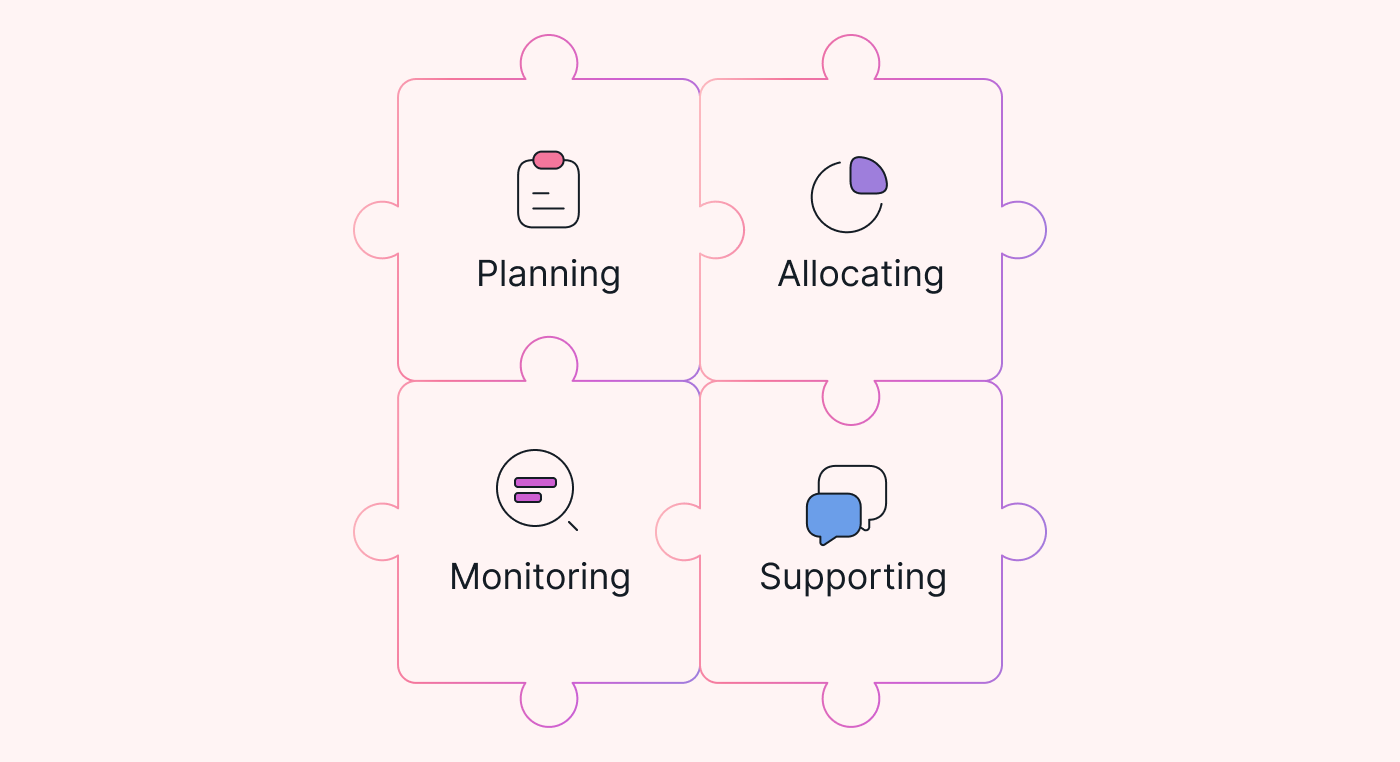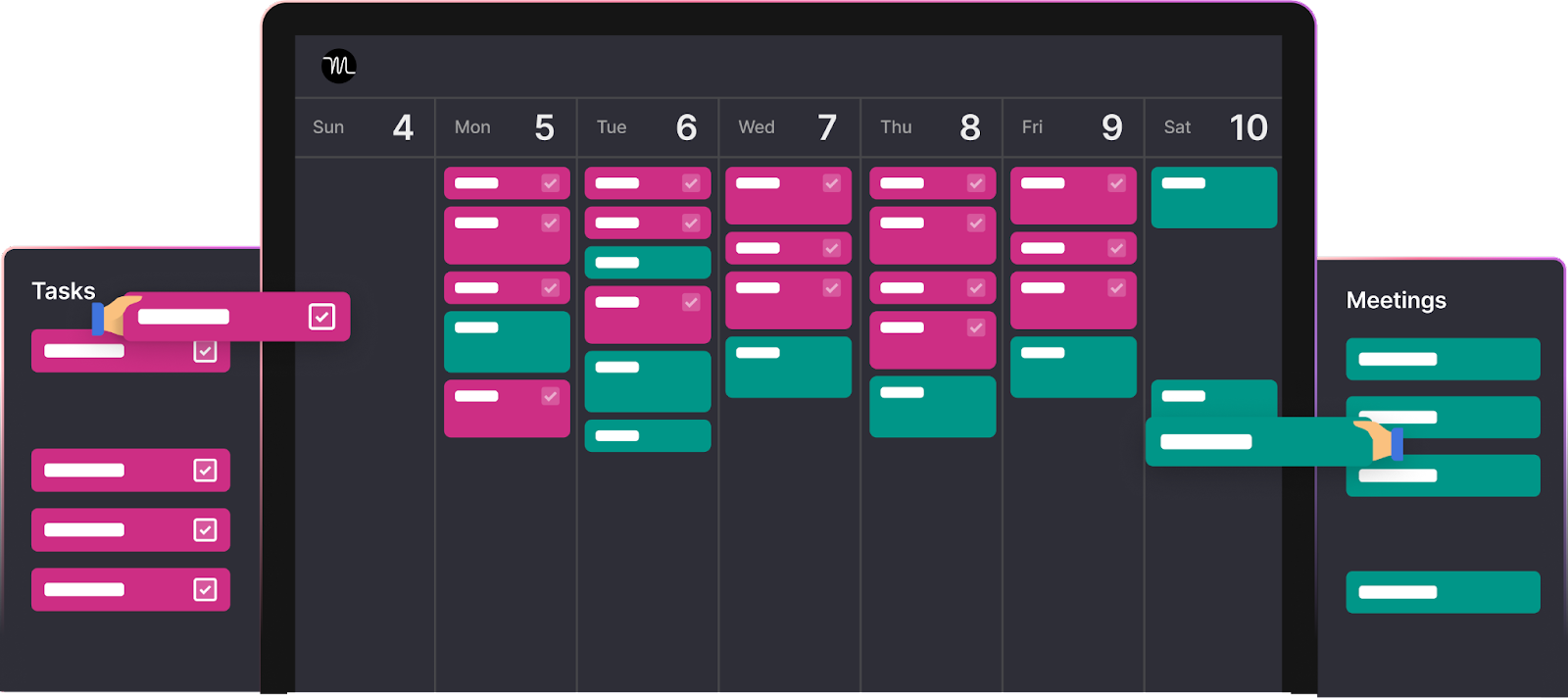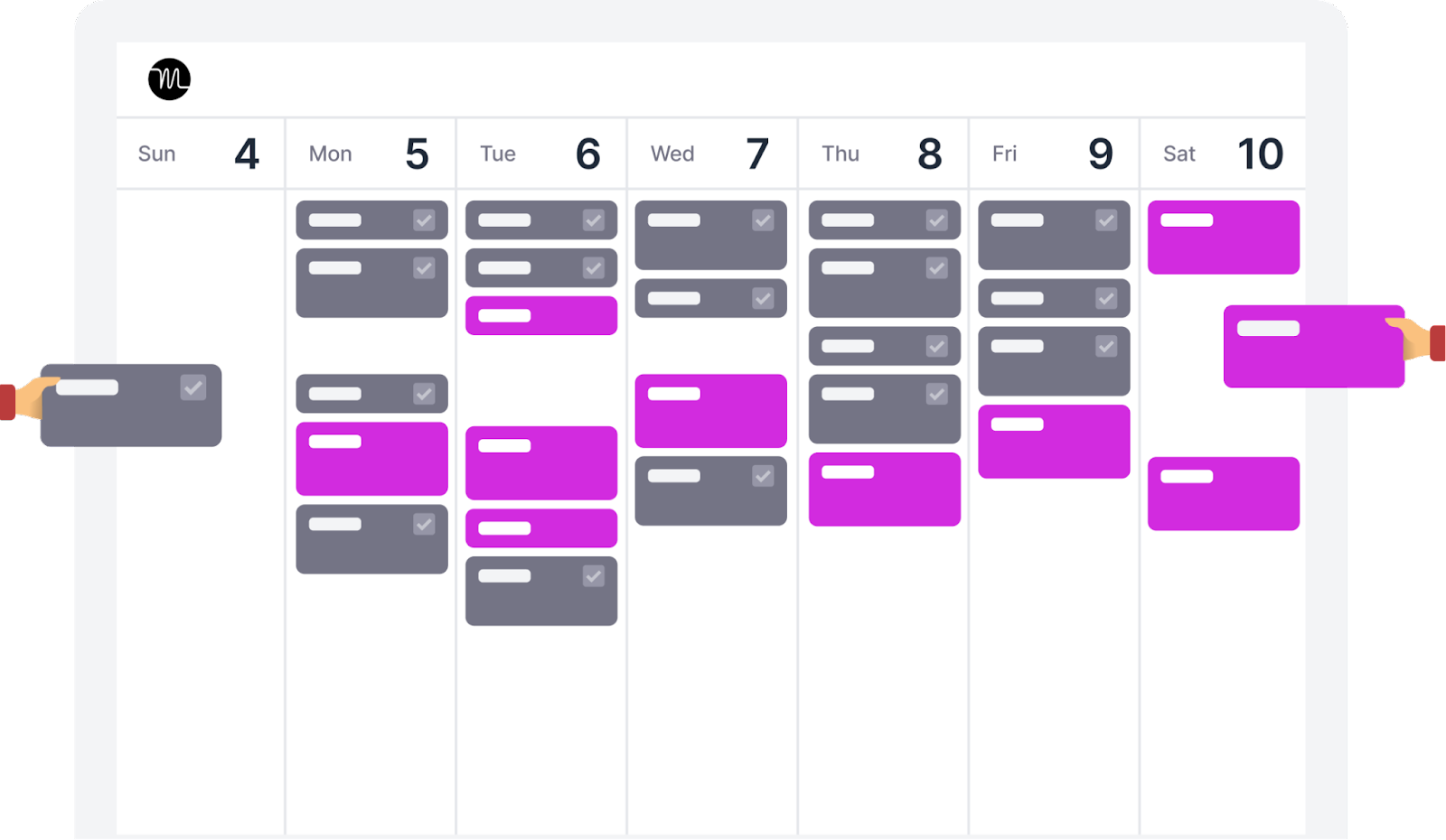Success in project management often hinges on the way you use resources.
Project managers agree that it is imperative to properly plan, keep track of, oversee, and assign resources. Failing in this area can be an incredibly agonizing experience, not just for the project manager, but for their team as well.
However, the resource allocation process is a complex task. It requires strategic thinking, adaptability, and a deep understanding of project requirements. So how are resources allocated?
This piece will look into the basics of resource allocation and how to execute it. We'll provide you with the information to accurately arrange your resources. We'll also give some helpful suggestions to help you in becoming a resource management master.
Let’s dig in.
What are resources?
Resources serve as the lifeblood of a project, fueling its progress and enabling teams to accomplish their tasks. They are like essential building blocks and tools project teams rely on to bring their ideas to life.
For something to be considered a resource in a project, it needs to meet two specific requirements.
- A resource should possess the necessary capabilities that relate to the project.
- Resources need to be accessible and present when required.
Projects often require a diverse range of resources to meet all the requirements. Here’s a look at the different types of resources before we dive into what allocation means:
- Human resources are project managers, team members, stakeholders, vendors, freelancers, and more. They can be anyone partaking in the project.
- Physical resources encompass tangible assets such as equipment, tools, materials, and facilities.
- Financial resources refer to the financial capital allocated for the project.
- Informational resources are data sources such as research, reports, and relevant knowledge.
- Technological resources include technical tools, software, systems, or platforms.
What is resource allocation?
Resource allocation is the process of identifying and assigning resources to specific tasks or duties. It involves strategically allocating resources to make the most of them so that they can help your projects succeed.
Let’s take an example where you have a simple project to organize a bake sale. Resource allocation would mean first figuring out your team member’s skills and strengths. You’d then allocate tasks such as baking, marketing, and setting up the sales booth to the ideal team members.
Poor resource allocation can lead to tons of problems. For instance, if a team member with excellent marketing skills has to handle the baking, the cake might be a disaster. Bad allocation can also cause delays, lower team morale, team member burnout, and decreased productivity.
In Agile project management, resource allocation takes a more dynamic approach. Agile teams adapt their resource allocation strategies to meet project needs. They also consider team dynamics and individual strengths. For example, team members with baking skills may also focus on tasks where they gather ingredients or plan the main menu with the managers.
The role of the project manager
Project managers understand the project information and are therefore necessary to allocate resources properly.
 |
Let’s return to the bake sale project, where the project manager must know what tasks they need to complete to succeed. They’d then allocate resources accordingly and keep track of them to ensure everything runs successfully.
Who does the allocating?
The primary responsibility for allocating resources usually falls to the project manager (PM). They have access to project information, such as the project scope and work breakdown structure (WBS), which they can use to plan allocation.
However, sometimes there are product managers, Scrum masters, or dedicated departments that do this.
In Agile, the Scrum master facilitates the Scrum framework and the completion of tasks to steer success. Similarly, product managers are responsible for defining and aligning the product vision. In some cases, both may be involved in resource allocation or work with a PM to do this.
In large companies, dedicated departments or teams may handle the resource allocation strategies. These departments have the expertise to allocate resources across multiple projects or departments. Sometimes, resource allocation is performed by PMOs or EPMOs.
Advantages of strong resource allocation
There are many benefits of resource allocation in business and projects.
Let's explore some of these advantages:
Improved productivity
Your team’s output will increase because they work on the right tasks at the ideal time. Your team can also focus on providing their best work if they are not rushed or distracted by multi-tasking.
Meeting deadlines
Proper resource allocation lets you know which resource is busy, with what task, and when. You can then plan tasks and assign resources in a way that aligns with your project timeline.
Optimal resource use
Robust resource allocation involves assigning resources based on their strengths and capabilities. Doing this reduces waste, minimizes downtime, and maximizes the contribution of each resource.
Impact on bottom line & billable hours
Effective resource allocation can help ensure project completion within the allocated budget. Doing so can prevent overspending on resources and minimize unnecessary financial commitments.
Using proper resource allocation, you can accurately track billable hours, which you can later invoice to clients.
What is resource management?
Resource management is the process of allocating and managing resources in the most optimal way. Project managers are usually responsible for resource management, which includes planning and allocating resources considering skills required to complete tasks, as well as team skills, morale and capacities.
 |
One of the key goals of resource management is to improve project efficiency with accurate planning and allocation. Doing this helps reduce delays, prevent problems, and helps to keep the project on track.
There are varying strategies to optimize resource usage. Some of these are resource leveling and resource smoothing, which helps balance workloads among team members to avoid overwhelming them. (We’ll dive into this more soon).
Additionally, resource management involves continuous monitoring and adjustment of resource allocation. It requires managers to stay vigilant and adapt to the project's evolving requirements and/or progress.
How are resources allocated?
Next up, let's go over how resources are most commonly allocated.
Manual allocation
Manual allocation is a hands-on approach where everyone participates in the allocation process.
 |
It involves analyzing project requirements, assessing the resources, and then matching them up.
Fixed allocation
The next method involves assigning specific resources to specific tasks for the entire duration of the project. Fixed allocation is suitable when tasks require skills consistently throughout the project lifecycle.
For example, in a software project, it'd be best to allocate skilled programmers to the coding tasks throughout the project's life cycle.
This method also helps meet project deliverables and removes the need for knowledge transfer from one resource to another.
Dynamic allocation
Dynamic allocation is almost the opposite of fixed allocation; however, the aim is also to meet skills it takes to produce deliverables. If fixed allocation is long-term, dynamic allocation assigns and reassigns resources with particular skills based on the requirements at a given point in time.
This method suits projects where you must constantly reallocate resources to where they are most needed. For example, if a new urgent task arises, you can reassign resources to address the priority without disrupting progress.
Dynamic allocation is particularly suitable for Agile project management methodologies. Agile projects deliver value to customers incrementally, and requirements can evolve along the way. Therefore, the teams adapt as the requirements change, and managers must allocate on the go based on these changes.
Resource leveling & resource smoothing
Resource leveling is a technique used to balance the workload of resources and optimize their usage. It involves adjusting task schedules, considering availability, and avoiding over-allocation and under-utilization.So, it means keeping the same resources, but extending the start and (more usually) end dates of a project to alleviate resource overload.
Resource smoothing also means balancing and managing the workload for projects to avoid resource usage spikes. Here additional resources are applied to address the overload, so you don’t have to change the existing target dates.
For example, if one team member is overloaded while another has available capacity, you can add the under-utilized resource to even the workload while keeping the original schedule.
Project management software
Project management software helps to simplify the allocation process. It can provide a central platform for managing resources and make assigning and tracking easier.
 |
Project management software allows you to assign tasks and in some cases can determine the total workload for resources.
Automated allocation
Automated allocation involves using tools and software that remove the need for manual work. These solutions consider all the important factors to ensure effective resource allocation.
 |
One such tool is Motion, which automates resource allocation and management. With it you assign the resources, and Motion's algorithms take into account the available work times specified by you (or by the resources themselves), the task priorities, and due dates. The AI-driven system determines the best placement on the resource's calendar, so tasks are completed on time.
Resource allocation typical issues and solutions
Resource allocation can sometimes present challenges in project management. Below are common issues that may arise and potential solutions to address them.
Dependencies
Dependencies are important factors in project planning, but they can create complications. To manage dependencies effectively, you need to identify and document them, as this helps visualize the order of tasks.
Once you understand and see the dependencies, you can better plan to handle them and avoid any delays. You can also adjust resource allocation based on the sequence of tasks.
Effective communication and teamwork also help when managing dependencies. Clear communication helps ensure everyone knows task dependencies and their impact on resources.
Over-allocation
Over-allocation happens when resources are working on more tasks or work than they can realistically finish on time.
To address over-allocation, think about using resource leveling or smoothing techniques.
- Use resource leveling for projects with flexible schedules. Adjust task deadlines or durations to lengthen the project and give your resources more time.
- If you can’t stretch the timeline, consider allocating more resources or reallocating tasks. This is resource smoothing to make sure there are no peaks or troughs in demand.
- Another solution is to identify potential skill gaps in the team’s capabilities for the required project. Consider training (if there is time) or seeking external expertise to bridge skill gaps and keep things on track.
Under-allocation
Under-allocation occurs when resources aren’t fully used. To balance workloads, it’s better if everyone is fully utilized rather than sitting idle.
To address under-allocation, project managers need to assess the availability of tasks that match the under-utilized resource’s skills, and look for opportunities to apply their skills to relieve over-allocations or even shorten the project schedule.
Resource allocation & contingency planning
The path to success is rarely straight, as unforeseen challenges and dynamic factors can disrupt even the most well-laid plans. This is where resource allocation and contingency planning should come together. Contingency plans can be built into your budget and timeline to help compensate for some of the risks in a project.
For example, if you have a fixed price job, you may want to build in both schedule and cost contingencies so unforeseen circumstances can be accommodated without slipping your target end date or earnings.
Throughout a project, several factors can influence the allocation of resources, such as:
- Client reviews: may take longer than expected and lead to potential delays.
- Development delays: certain deliverables (for example, those based on uncertain supply chains) can make it hard to predict exact timelines.
- Personal emergencies: can impact allocated resources.
- Competing projects: this means the priority may shift to more significant initiatives.
In the face of these challenges, you'll need to use a backup resource allocation plan. Here's a quick breakdown of how to make one for your resource allocation:
- Conduct a thorough risk assessment to identify possible challenges. Involve key stakeholders and team members to gain different perspectives and insights.
- Next, categorize risks based on their severity and likelihood.
- For each identified risk, create a response strategy that outlines how to address the challenge if it occurs. Consider both short-term and long-term solutions and adaptability.
- Establish clear triggers or indicators that will activate the contingency plan.
- Contingency plans should not be static documents. Regularly review and update them based on changing project conditions.
Motion can allocate resources for you
Motion has a unique solution to help with resource allocation that many other project management apps don't have. After you've assigned tasks, it places the work in your resources schedule and the AI manages their time and tasks instead of you (or them).
Another benefit of this is that you don't have to figure out the best time for a task as Motion does this automatically (millions of times a day). If it can’t find the best time, it will notify you, meaning it will tell you about potential delays early.
 |
Motion also offers a convenient booking system where you can reserve resources for specific projects or tasks. This feature streamlines the allocation process and can help distribute them fairly.
 |
What also makes Motion useful is its ability to track resource use in real-time. It can provide insights and reports on what your resources are doing and send you live notifications of task updates.
For business owners and project managers alike, Motion’s features are particularly valuable. The timeline view can help prioritize tasks and allocate resources accordingly. The Kanban boards enable you to easily manage and allocate resources based on project stages and priorities.
Ready to take control of your resource allocation?
Sign up for your 7-day free trial of Motion.





